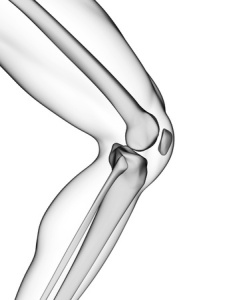Adult Stem Cell Therapy & Platelet Rich Plasma
Replacement Knee Surgery: 3D Printing…Science Fiction or Remarkable Reality?
If certain parts of the knee are severely affected with arthritis, to the point that day-to-day functioning has become difficult, a knee replacement is an attractive option. Of course, it is a surgical procedure; and as a result, is only advisable if all other options prove to be non-viable. However, for those in constant pain, a knee replacement is a remarkable opportunity indeed.
Originally, knee replacements used standardized replica components, which as you can imagine, were not without their drawbacks. However, times have changed since these humble beginnings. Now, the big question is: Just where has science progressed to in the 21st century with regards to knee replacement surgery?
 The 3D Printed Knee?
The 3D Printed Knee?
If you were to read that it was possible to recreate the compartments of your knee, using your own cells, via a 3D printing machine; chances are that you’d be sceptical. Such scientific ideas seem generally to be the sole preserve of sci-fi films and futuristic literature.
However, thanks to remarkable advancements in modern science, 3D printing for medical use is now a reality, albeit in its relatively early stages. In fact, 3D printing has been around for a while now, though for the most part, usage has been limited to recreational use; for example, creating ornaments or other objects.
How Does it Work?
3D printing machines, at first glance, look just like simple plastic boxes. The object is quite literally ‘built’ within the box, using layers of material, laid down under the control of a computer system. Materials vary, but it’s possible to use metals (such as titanium) and plastics; both of which are highly suited for medical use.
In 2012, bio-printing technology made some astonishing leaps in development, with scientists using cells from a patient to generate new organs and other body parts. Of course, if highly complex organisms such as kidneys can be recreated faithfully in 3D printers, it is unsurprising that 3D printed knee replacements, rendered to replace the original perfectly, have become a reality.
The Advantages of Customizing Knee Components
The original standardized knee components have a lot of drawbacks. Although there are variations in size, it’s highly unlikely that a standard knee component will ever be a ‘perfect fit’. Neither can a standardized knee component ever match the natural irregularities found within the human body.
3D printing is still a relatively new procedure, though it looks likely to enter mainstream practice fairly swiftly. However, doctors (such as Dr Bennett) are already working with custom implants, which offer similar advantages.
Using CT scans or X-ray images of the patient’s knee, it’s possible to generate a customized replacement knee component, which eradicates any issues associated with ‘awkward fit’ within the knee.
The procedure is also conducted in a minimally invasive manner, which is excellent news in terms of swift recovery and reduced scarring.
Finding Out More About Knee Replacement Surgery
If you’re interested to find out more about customized knee replacement surgery, get in touch with Dr Bennett and his team by calling 941-404-2703. Bennett Orthopedics and Sportsmedicine are only ones doing custom knee replacements from Tampa to Port Charlotte, with over 5 years experience. We combine procedures with a minimally invasive approach so most patient can walk without a cane in 2 weeks and many in 2 days. Patients commonly remark that it feels like their normal knee after surgery, and we can confirm while examining the knee that there appears to be no difference between the custom knee implant and a normal, functioning knee






